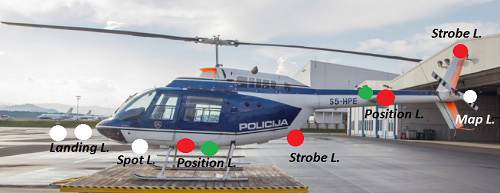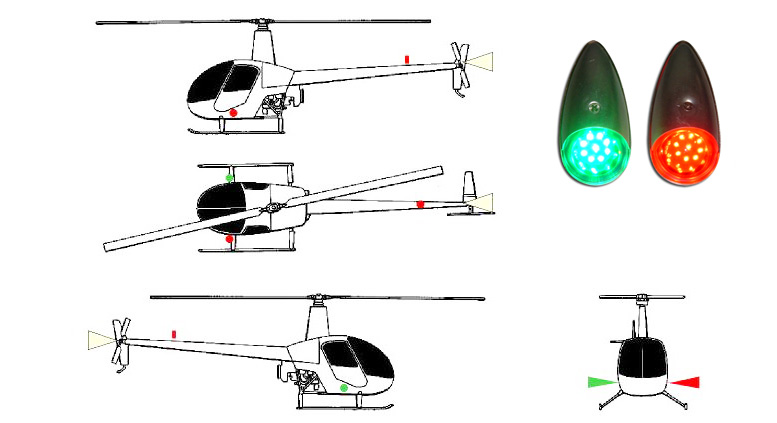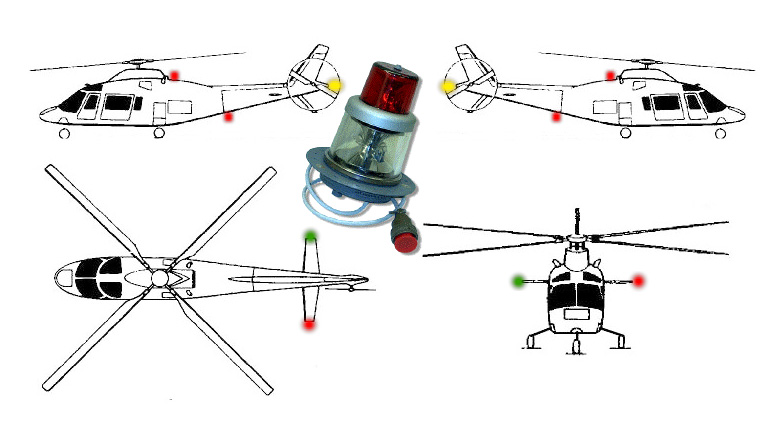It’s All About Being Seen In The Skies
Being seen under ‘see and avoid’
THE FAA FLIGHT RULE that specifies the requirement for aircraft lights is an important part of the collection of rules intended to help pilots to see and avoid other traffic.
Reviewing it here is the third follow-up to my August 2015 column (“Pilot Counsel: The ‘See and Avoid’ Rules”) that examined the overall “see and avoid” requirement of FAR 91.113(b) after the NTSB issued a safety alert on the topic.
The specific wording of the regulation bears reemphasizing: “When weather conditions permit, regardless of whether an operation is conducted under instrument flight rules or visual flight rules, vigilance shall be maintained by each person operating an aircraft so as to see and avoid other aircraft.”
In September, I reviewed the right-of-way rules, and in October, VFR cruising altitudes—all supplements to “see and avoid.”
The premise of this “aircraft lights” rule is that a properly lighted aircraft is much easier to see and avoid.
This month I review FAR 91.209, “Aircraft lights.” This rule requires lighted position lights for any aircraft operated during darkness (the period from sunset to sunrise, or in Alaska, “during the period a prominent unlighted object cannot be seen from a distance of 3 statute miles or the sun is more than 6 degrees below the horizon”).

And, for aircraft that also are equipped with an “anticollision light system” — as many are — the anticollision lights must be on at all times, not just during periods of darkness.
However, there is an important qualification for aircraft that have an anticollision light system that includes both a rotating beacon and strobe lights. If the anticollision system is required to be on, must both the rotating beacon and the strobes be on?
The answer is, technically, yes—both the strobe lights and the rotating beacon are considered part of the same anticollision system. However, there is a safety qualification: The FAA recognizes the concern that the use of a strobe light as an anticollision light could create an unsafe condition during certain aircraft operations.
The use of a high-intensity anticollision light, such as a strobe light, could create unsafe conditions by inducing vertigo and causing spatial distortion. As a result, the FAA included language in the rule to give the pilot in command the discretion to control how many lights are turned on in the anticollision system.
The regulation permits the pilot in command to turn off the anticollision lights if he or she “determines that, because of operating conditions, it would be in the interest of safety to turn the lights off.”
Can the pilot turn off both? FAR 91.209(b), as interpreted by the FAA, gives the pilot in command the discretion to turn off the anticollision beacon and/or the anti-collision strobe light system if he or she determines that it is in the interests of safety to turn off either one or both of these components of the same lighting system.
Another important question answered by an FAA interpretation is whether the lights must be turned on prior to engine start. The FAA interpretation focuses on the meaning of the word “operate” in the rule, and it concludes that the lights are not required to be on prior to engine start.
An aircraft that is about to be used is not being “operated” until an engine is actually started. It is important to note that this FAA interpretation addresses what specifically is required by the rule.
The FAA is quick to offer a safety precaution, recommending that—as a matter of safety—the anti-collision lights should be on before starting an engine or causing a propeller or rotor to move. This is a common practice among many pilots.
To summarize, lighted position lights are required for any aircraft operated during darkness; and anticollision lights, if installed, must be on at all times during aircraft operation. While it ordinarily is safer to turn on the anticollision lights prior to engine start—that is, prior to “operation” — this is not required, although it is recommended.
For aircraft that have both a rotating beacon and strobe lights, while both are part of the same anticollision light system, one or both can remain unlighted during aircraft operation, within the safety discretion of the pilot in command.
The premise of this “aircraft lights” rule is that a properly lighted aircraft is much easier to see and avoid. It is one of the rules that helps us to comply with FAR 91.113(b).




Be the first to comment on "Compulsory Aircraft lights"